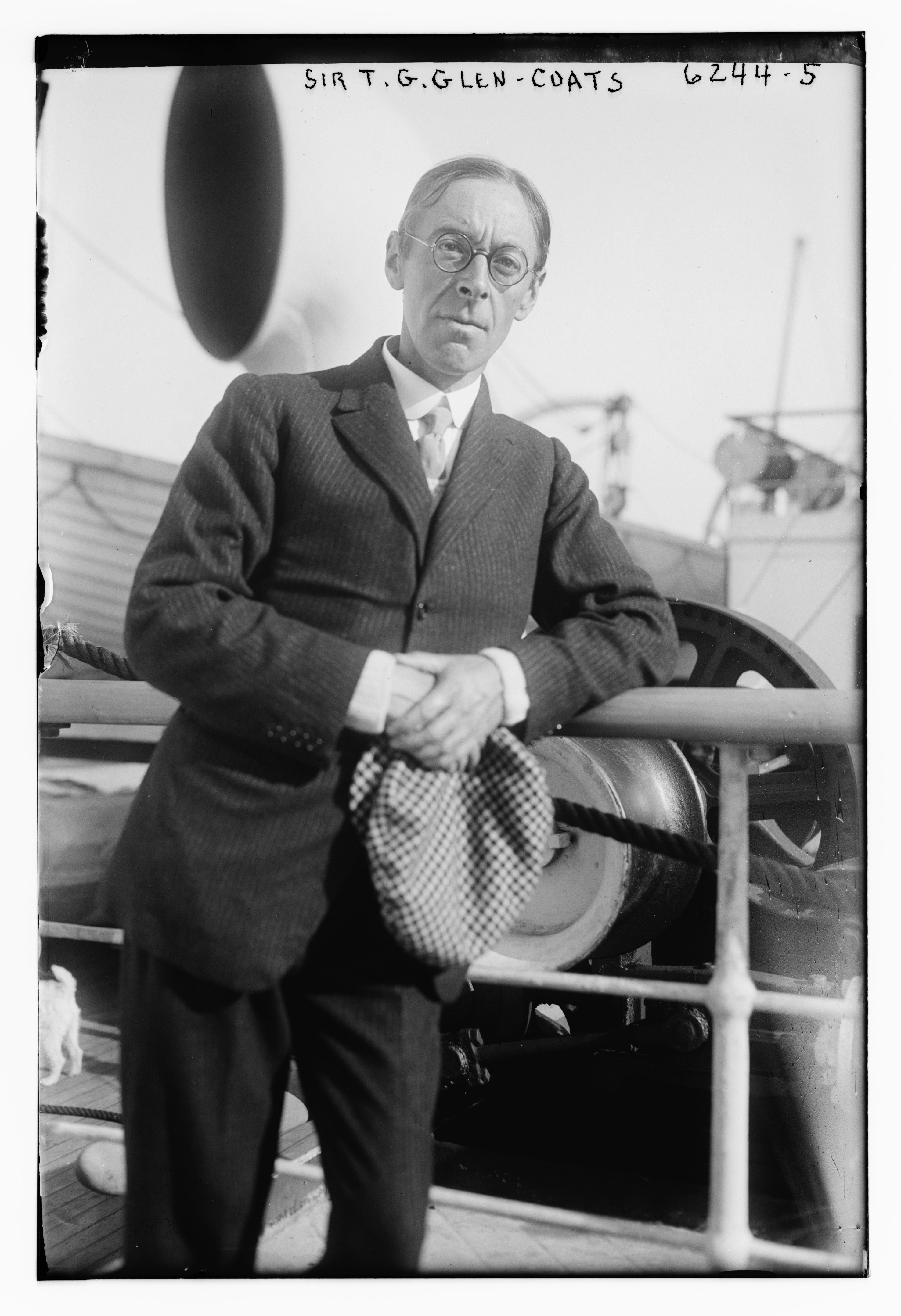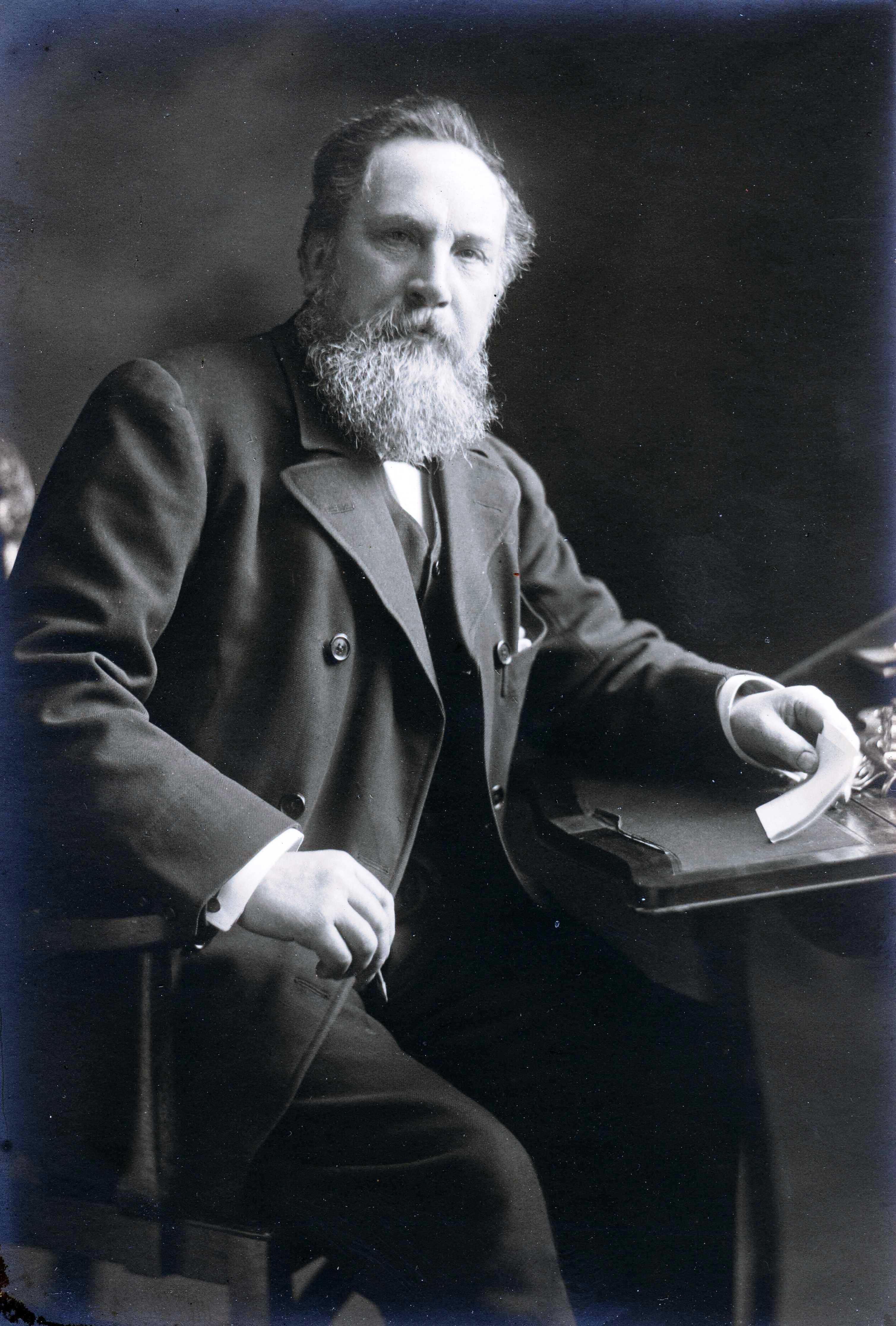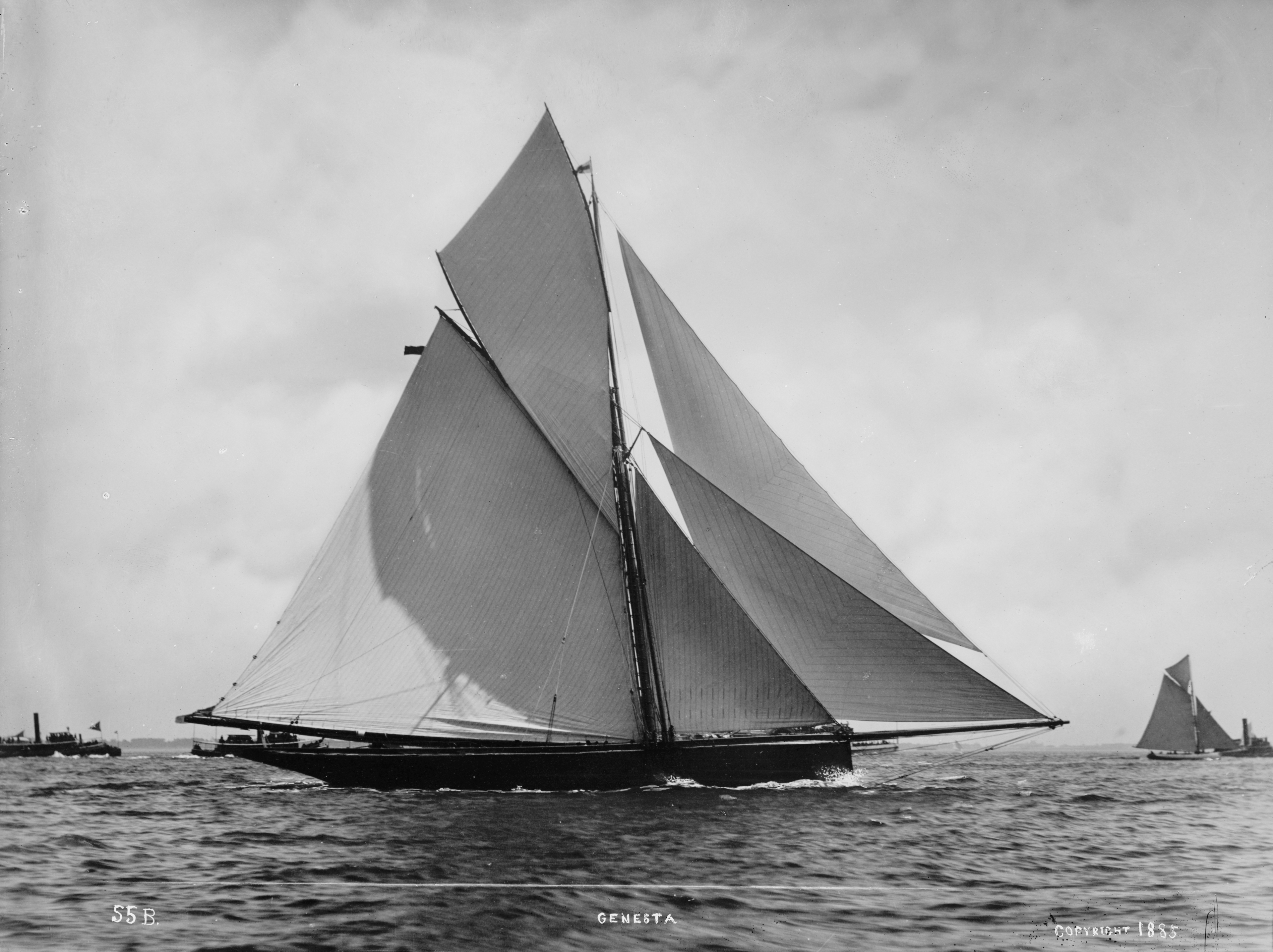|
12 Metre
The 12 Metre class is a rating class for racing sailboats that are designed to the International rule. It enables fair competition between boats that rate in the class whilst retaining the freedom to experiment with the details of their designs. The designation "12 Metre" does not refer to any single measurement on the boat, and is not referencing the vessels overall length, rather, measures the sum of the components directed by the formula which governs design and construction parameters. Typically 12 Metre class boats range from 65 to 75 feet (about 20 to 23 m) in length overall; they are most often sloop-rigged, with masts roughly 85 feet (26 m) tall. The first 12 Metres were built in 1907. The 12 Metre class was used in the Olympic Games of 1908, 1912 and 1920 but few boats participated in these events. The 12 Metre class boats are best known as the boat design used in the America's Cup from 1958 to 1987. Competitiveness between boats in the class is maintained by requiring t ... [...More Info...] [...Related Items...] OR: [Wikipedia] [Google] [Baidu] |
Freedom (yacht)
''Freedom'' (12 meter US-30) is a 12-metre class racing yacht and winner of the 1980 America's Cup, defeating the challenging yacht ''Australia'' under skipper Dennis Conner. ''Freedom'' was designed with an alloy rather than a wood hull by Olin Stephens and Bill Langan, and constructed at Minneford Yacht Yard. She was skippered in the Cup by Dennis Conner. Today ''Freedom'' is available for charter out of Newport, Rhode Island Newport is an American seaside city on Aquidneck Island in Newport County, Rhode Island. It is located in Narragansett Bay, approximately southeast of Providence, Rhode Island, Providence, south of Fall River, Massachusetts, south of Boston, ... from America's Cup Charters, along with fellow America's Cup winners '' Intrepid'' and '' Weatherly''. References * America's Cup defenders Individual sailing vessels 12-metre class yachts Yachts of New York Yacht Club members Sailboat type designs by Olin Stephens Sailboat type designs ... [...More Info...] [...Related Items...] OR: [Wikipedia] [Google] [Baidu] |
Freeboard (nautical)
In sailing and boating, a vessel's freeboard is the distance from the waterline to the upper deck level, measured at the lowest point of sheer where water can enter the boat or ship. In commercial vessels, the latter criterion measured relative to the ship's load line, regardless of deck arrangements, is the mandated and regulated meaning. In yachts, a low freeboard is often found on racing boats, for increased speed (by reducing weight and therefore drag). A higher freeboard will give more room in the cabin, but will increase weight and drag, compromising speed. A higher freeboard, such as used on ocean liners, also helps weather waves and so reduce the likelihood of being washed over by full water waves. A low-freeboard vessel is susceptible to taking in water in rough seas. Freighter ships and warships use high freeboard designs to increase internal volume, which also allows them to satisfy International Maritime Organization (IMO) damage stability regulations, due to in ... [...More Info...] [...Related Items...] OR: [Wikipedia] [Google] [Baidu] |
Dacron
Polyethylene terephthalate (or poly(ethylene terephthalate), PET, PETE, or the obsolete PETP or PET-P), is the most common thermoplastic polymer resin of the polyester family and is used in fibres for clothing, containers for liquids and foods, and thermoforming for manufacturing, and in combination with glass fibre for engineering resins. In 2016, annual production of PET was 56 million tons. The biggest application is in fibres (in excess of 60%), with bottle production accounting for about 30% of global demand. In the context of textile applications, PET is referred to by its common name, polyester, whereas the acronym ''PET'' is generally used in relation to packaging. Polyester makes up about 18% of world polymer production and is the fourth-most-produced polymer after polyethylene (PE), polypropylene (PP) and polyvinyl chloride (PVC). PET consists of repeating (C10H8O4) units. PET is commonly recycled, and has the digit 1 (♳) as its resin identification code (RIC). Th ... [...More Info...] [...Related Items...] OR: [Wikipedia] [Google] [Baidu] |
Bermuda Rig
A Bermuda rig, Bermudian rig, or Marconi rig is a configuration of Mast (sailing), mast and rigging for a type of sailboat and is the typical configuration for most modern sailboats. This configuration was developed in Bermuda in the 1600s; the term ''Marconi'', a reference to the inventor of the Radio#History, radio, Guglielmo Marconi, became associated with this configuration in the early 1900s because the wires that stabilize the mast of a Bermuda rig reminded observers of the wires on early radio masts. Description The rig consists of a triangular sail set aft of the mast with its Mainsail#Bermuda rig, mainsail raised to the top of the mast; its parts of a sail, luff runs down the mast and is normally attached to it for its entire length; its Tack (sailing), tack is attached at the base of the mast; its Parts of a sail, foot (in modern versions of the rig) controlled by a Boom (sailing), boom; and its Parts of a sail, clew attached to the aft end of the boom, which is control ... [...More Info...] [...Related Items...] OR: [Wikipedia] [Google] [Baidu] |
Gaff Rig
Gaff rig is a sailing rig (configuration of sails, mast and stays) in which the sail is four-cornered, fore-and-aft rigged, controlled at its peak and, usually, its entire head by a spar (pole) called the ''gaff''. Because of the size and shape of the sail, a gaff rig will have running backstays rather than permanent backstays. The gaff enables a fore and aft sail to be four sided, rather than triangular. A gaff rig typically carries 25 percent more sail than an equivalent Bermudian rig for a given hull design. A sail hoisted from a gaff is called a gaff-rigged (or, less commonly, gaff rigged or gaffrigged) sail. Description Gaff rig remains the most popular fore-aft rig for schooner and barquentine mainsails and other course sails, and spanker sails on a square rigged vessel are always gaff rigged. On other rigs, particularly the sloop, ketch and yawl, gaff rigged sails were once common but have now been largely replaced by the Bermuda rig sail, which, in addition to bei ... [...More Info...] [...Related Items...] OR: [Wikipedia] [Google] [Baidu] |
International America's Cup Class
The International Americas Cup Class is a class of racing yacht that was developed for the America's Cup between 1992 and 2007. These yachts, while not identical, were all designed to the same formula to offer designers the freedom to experiment whilst keeping the boats sufficiently comparable to race in real time. The class was established for the 1992 America's Cup because of perceived shortcomings of the 12-metre class, which had been used in the America's Cup since 1958. In addition to the America's Cup, IACC yachts were raced in other regattas, including the IACC worlds. IACC Sail numbers IACC sail numbers were issued according to the date when the ACM measurement committee decided that the hull has reached a certain stage of completion. The number came in two parts: the flag state (represented by a three letter prefix) and the hull number. The country code changed as the hull was transferred from flag state to flag state. Only one boat had a sail number issued twice as i ... [...More Info...] [...Related Items...] OR: [Wikipedia] [Google] [Baidu] |
Alfred Mylne
Alfred Mylne (1872–1951) was a Scottish yacht designer, born in Glasgow. He founded A Mylne & Co. in 1896. Work Alfred Mylne was apprenticed to the Scottish shipbuilders Napier, Shanks and Bell, and went on to work as a draftsman and apprentice to George Lennox Watson. Watson was the designer of the Royal Yacht HMY ''Britannia'', the racing cutter first owned by Edward, Prince of Wales. Mylne set up his own office in 1896. In 1906, Mylne was involved in establishing the International Metre Rule, a yacht-racing handicap rule. Mylne designed a number of race-winning boats, including the 19-metre class cutter '' Octavia'' in 1911. Four 15-metre class yachts and the early 12-metre class ''Cyra'' are listed as built to his designs, as well as the 8 metre ''Raven''. Boat designer Uffa Fox was a close friend of Mylne, and the latter appears regularly in the books Fox wrote before the Second World War. When Sir William Burton had his 12-metre class yacht, ''Marina'', desi ... [...More Info...] [...Related Items...] OR: [Wikipedia] [Google] [Baidu] |
Sir Thomas Glen-Coats, 2nd Baronet
Sir Thomas Coats Glen Glen-Coats, 2nd Baronet (5 May 1878, in Paisley – 7 March 1954, in Glasgow) was a Scottish sailor who competed for the Royal Clyde Yacht Club in the 12-metre class at the 1908 Summer Olympics. He was the son of Sir Thomas Glen-Coats, 1st Baronet, Member of Parliament for West Renfrewshire. The 12-Metre ''Heatherbell'' was designed by Thomas C Glenn-Coates (skipper) for Major Andrew Coates and built by Alexander Robertson & Sons in 1907. She was the first yacht in the new metre-class to be built in the UK. The 'Coates' name (textile/thread dynasty of Paisley) became well known for racing 8-Metres on the Clyde, between 1911 and 1938. ''Heatherbell'' later represented Finland in the 1912 Helsinki Summer Olympics. He was also the designer and helm of the British boat ''Hera'', which won the 1908 gold medal in the 12-metre class. He was apprentice to Alfred Mylne, who crewed on the yacht for his young protégé. On his father's death in 1922 he became a ... [...More Info...] [...Related Items...] OR: [Wikipedia] [Google] [Baidu] |
Alexander Robertson & Sons
Alexander Robertson & Sons was a boatyard in Sandbank, Argyll, Sandbank, Argyll and Bute, Scotland, from 1876 to 1980. The yard was located on the shore of the Holy Loch, not far from the Royal Clyde Yacht Club (RCYC) at Hunters Quay, in the building that is now the Royal Marine Hotel, which was the epicentre of early Clyde yachting. Alexander Robertson started repairing boats in a small workshop at Sandbank in 1876, and went on to become one of the foremost wooden boat-builders on Scotland's River Clyde. The "golden years" of Robertson's yard were in the early 1900s, when it started building some of the first International Rule (sailing), IYRU 12mR & 15mR (Metre Class) racing yachts. Robertson's was well known for the quality of its workmanship and was chosen to build the first 15-metre yacht designed by William Fife III (''Shimna'', 1907). More than 55 boats were built by Robertson's in preparation for the First World War and the yard remained busy even during the Great Depress ... [...More Info...] [...Related Items...] OR: [Wikipedia] [Google] [Baidu] |
Sceptre (yacht)
''Sceptre'' (K-17) was the unsuccessful challenger of the 1958 America's Cup for the Royal Yacht Squadron. Design Designed by David Boyd and built by Alexander Robertson & Sons, ''Sceptre'' was built especially for the 1958 America's Cup challenge. Career ''Sceptre'' was owned by a syndicate headed by Hugh Goodson, plus Richard Dickson, William H. Northam, William G. Walkley, and Noel Foley. ''Sceptre'' lost 4-0 to defender ''Columbia'' of the New York Yacht Club. She is now owned and sailed in British waters by the ''Sceptre'' Preservation Society. References #Alexander Robertson & Sons Alexander Robertson & Sons was a boatyard in Sandbank, Argyll, Sandbank, Argyll and Bute, Scotland, from 1876 to 1980. The yard was located on the shore of the Holy Loch, not far from the Royal Clyde Yacht Club (RCYC) at Hunters Quay, in the bui ..., history of the yard. External links Sceptre Preservation Society America's Cup challengers Individual sailing vessels 12-metre class ... [...More Info...] [...Related Items...] OR: [Wikipedia] [Google] [Baidu] |
Royal Yacht Squadron
The Royal Yacht Squadron (RYS) is a British yacht club. Its clubhouse is Cowes Castle on the Isle of Wight in the United Kingdom. Member yachts are given the suffix RYS to their names, and are permitted (with the appropriate warrant) to wear the White Ensign of the Royal Navy rather than the merchant Red Ensign worn by the majority of other UK registered vessels. The club's patron was Queen Elizabeth II. The Royal Yacht Squadron entered the 2021 America's Cup in Auckland, New Zealand, with the Ineos Team UK syndicate led by Sir Ben Ainslie, but did not win. In March 2021, an entity associated with the RYS, called Royal Yacht Squadron Racing Ltd, was officially accepted as the Challenger of Record for the 37th America's Cup competition. History Founded on 1 June 1815 in the Thatched House Tavern in St James's, London as The Yacht Club by 42 gentlemen interested in sea yachting, the original members decided to meet in London and in Cowes twice a year, to discuss yachtin ... [...More Info...] [...Related Items...] OR: [Wikipedia] [Google] [Baidu] |
J-class Yacht
A J-Class yacht (sometimes called a "J-boat") is a single-masted racing yacht built to the specifications of Nathanael Herreshoff's Universal Rule. The J-Class are considered the peak racers of the era when the Universal Rule determined eligibility in the America's Cup. Universal Rule The J-Class is one of several classes deriving from the Universal Rule for racing boats. The rule was established in 1903 and rates double-masted racers (classes A through H) and single-masted racers (classes I through S). From 1914 to 1937, the rule was used to determine eligibility for the Americas Cup. In the late 1920s, the trend was towards smaller boats and so agreement among American yacht clubs led to rule changes such that after 1937 the International Rule would be used for 12 Metre class boats. Universal Rule formula The Universal Rule formula is: R=\frac Where: ** L is boat length (a number itself derived from a formula that includes Load Waterline Length L.W.L in feet) ** S is ... [...More Info...] [...Related Items...] OR: [Wikipedia] [Google] [Baidu] |




